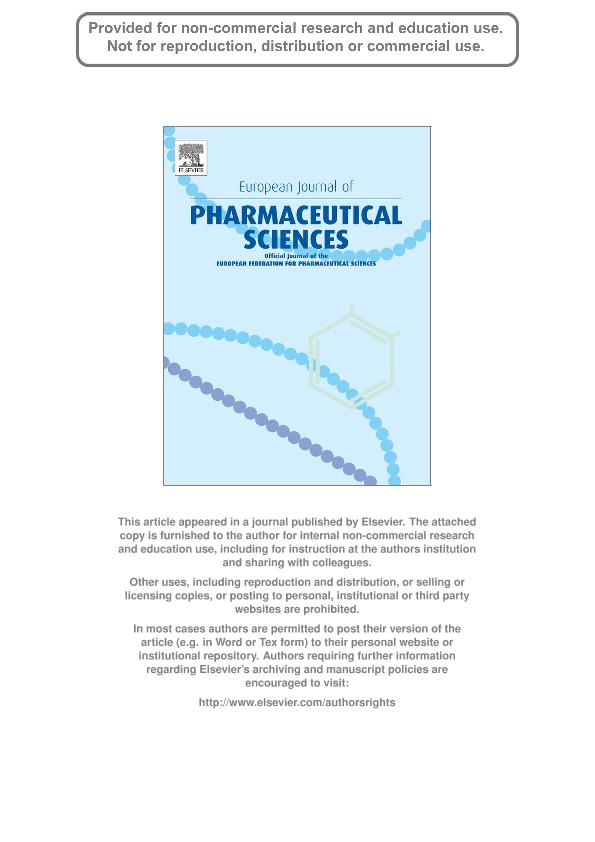Artículo
Equilibrium and release properties of hyaluronic acid–drug complexes
Fecha de publicación:
05/2013
Editorial:
Elsevier Science
Revista:
European Journal Of Pharmaceutical Sciences
ISSN:
0928-0987
Idioma:
Inglés
Tipo de recurso:
Artículo publicado
Clasificación temática:
Resumen
With the aim to provide more rational basis about the potentiality of hyaluronic acid (or hyaluronan) as drug carrier a set of ionic complexes of its acid form (HA) and its sodium salt (NaHA) with three model drugs (D) (atenolol, propranolol and lidocaine) were prepared. Besides NaHA subjected to hyalurodinase depolimerization (NaHAd) was also used. Transparent dispersions were obtained. They exhibited negative electrokinetic potential and a high degree of counterionic condensation with affinity constants (logKcc) in the range of 5.8–6.1 for propranolol complexes (pKa 9.45) and 4.0–4.6 for lidocaine ones (pKa 7.92). Delivery rates of D from the complexes were measured in a Franz-type bicompartimental device. Loaded D were slowly released from the three types of complexes, even when a neutral salt was added to the dispersion placed in the donor compartment, revealing the high affinity between the protonated drugs and the ionisable groups of the polymer. Complex dispersions based on HA or on NaHAd exhibited lower viscosity than those of NaHA but their complexing ability remained unaltered. The results reported on equilibrium and release properties of Hyaluronan-model D complexes contribute to expand the use of HA and NaHA as drug carriers for different routes of administration.
Archivos asociados
Licencia
Identificadores
Colecciones
Articulos(UNITEFA)
Articulos de UNIDAD DE INVESTIGACION Y DESARROLLO EN TECNOLOGIA FARMACEUTICA
Articulos de UNIDAD DE INVESTIGACION Y DESARROLLO EN TECNOLOGIA FARMACEUTICA
Citación
Battistini, Franco David; Olivera, Maria Eugenia; Manzo, Ruben Hilario; Equilibrium and release properties of hyaluronic acid–drug complexes; Elsevier Science; European Journal Of Pharmaceutical Sciences; 49; 4; 5-2013; 588-594
Compartir
Altmétricas




